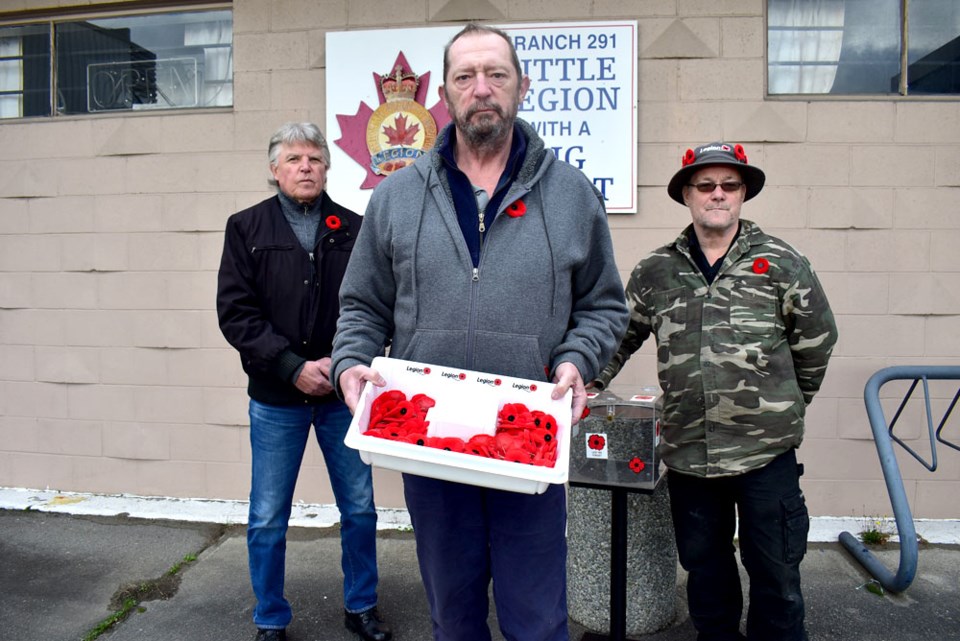A red Remembrance Day poppy is free – it’s already been paid for by the blood of Canadian soldiers, explained Matthew McBride, chair of the Richmond Poppy Fund.
The poppy campaign does, however, collect voluntary donations and these go to support veterans in the community.
But the important thing is to wear a poppy to commemorate those who served, explained the Richmond poppy campaign volunteers.
This year marks 100 years since the poppy was adopted as a symbol of remembrance - shortly after the end of the First World War – based on a poem by Canadian Medical Officer Lt.-Col. John McCrae which begins: “In Flanders fields the poppies grow, between the crosses, row on row.”
A Frenchwoman, Anna Guerin, was inspired by the poem and started making cloth poppies as a charity fundraiser to rebuild France after the war.
She also presented the idea to France’s allies, including to the Canadian Great War Veterans Association, which later become the Royal Canadian Legion.
The idea was adopted in Canada on July 6, 1921.
The impact of the First World War was profound on Canadian society, McBride said, as eight per cent of the population was in uniform.
“Every family had a reason to remember,” McBride said.
The red symbolizes spilled blood and the black centre symbolizes mourning.
The poppy isn’t political, religious or ethnic, McBride said, it’s just a personal way of remembering Canadians who died in service to their country.
For legion volunteer Martin Nystad, the poppy has a deeper meaning than any other branding currently in use.
The poppy represents people and a country, not a product, Nystad said.
Nystad thinks about, not just the soldiers like his father who served in Second World War, but those who supported the army, like the nurses that saved his father’s life, or the paramedics in the ambulances on the frontlines of war.
Nystad warns against romanticizing the military “because war stinks.”
“I’ve never served in a war, but coming from a family of a veteran that’s seen combat, I can see the hell it does to a human being’s mind - physical, mental, emotional health,” Nystad said. “I’ve seen that blank stare.”
“Nobody comes out of the service without a mark,” McBride added.
Every year the poppy campaign in Richmond raises between $40,000 and $60,000 to support veterans, for example, to buy them scooters, hearing aids or to get them a support dog.
Nystad encourages Richmond residents – especially those who are retired and wanting to give back to their community – to volunteer with the poppy campaign next year.
“It’s (a way) to give back ever so little to say thank you,” he said.
Limited invitees for Remembrance Day service
This is the second year COVID-19 is curtailing Remembrance Day ceremonies in Richmond – and across Canada.
The Richmond ceremony will have 100 invited guests and the city is asking the public not to attend in order to protect the health of those in attendance.
The online ceremony will be broadcast live starting at about 10:25 a.m. on Nov. 11. To access the live broadcast, go to Richmond.ca/Remember.
McBride, who is emceeing the ceremony hopes next year the pandemic will have waned and it will be possible to have a large gathering again at the cenotaph to remember those who served in the Canada’s wars.
While Branch 291 is still closed to the public, ANAF 284 in Steveston (11900 No. 1 Rd.) will be open to the public after noon. Its capacity is 300.
After Remembrance Day, Richmond residents can drop their poppies off at the cenotaph by city hall.



